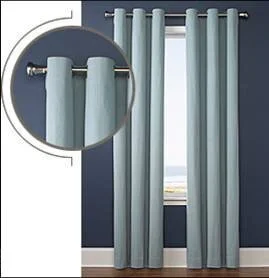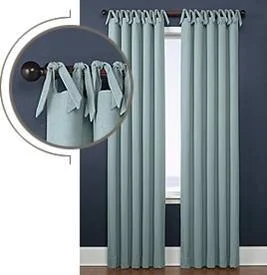Quick Guide to the Most Common Hanging Curtains and Drapery
Heads up: I use affiliate links for my fave products. If you click and purchase, I may receive a small commission at no extra cost to you.
As a follow-up to my recent post regarding hanging window treatments, I thought it would be fitting to provide you with a quick guide to the most common styles of hanging curtains and draperies. Before I show you examples of the different styles, here are a few of the different TYPES of hanging window treatments:
Sheers - aka Glass or undercurtains – closest to the window, made of thin translucent fabric that lets in diffused daylight while offering some privacy.
Drapery – Second set of curtains made of a heavier fabric; lined; stationary or can be drawn open or closed.
Curtain – any hanging fabric window covering.
Valance – The decorative topper to drapery. Traditional look uses valances; Contemporary décor omits.
Now how are they hung? Here are some of the most common styles:
There are also French Pleats, European Pleats and Goblet Pleats, amongst others, which are usually hung on a mechanical traverse rod with hooks on the back of the curtains. This hanging method is more traditional and not commonly used with ready-to-hang curtains available today.
You can utilize a combination of these various types of window treatments. I, myself, am currently using rod pocket curtains and sheers in some rooms, tie tops curtains and rod pocket sheers and just a valance by itself.
Here are some quick tips and tricks for where to physically hang the curtains themselves:
If you want to give a ceiling the illusion of being higher, carry the line of the window treatment from floor to ceiling.
If you want to give to give the ceiling the illusion of being lower, break up the vertical line by starting the top of the window treatment below the ceiling line, usually just above the window trim.
To make a small window appear larger, hang the drapery outside of the window size.
I hope you find this guide helpful and useful. I would love to hear your feedback. Please feel free to leave your comments below and share photos of windows you've "tricked out".
Subscribe to the Behind the Renovation Design Journal
Sign up to receive the latest home renovation tips, resources, and inspiration!
RELATED POSTS











